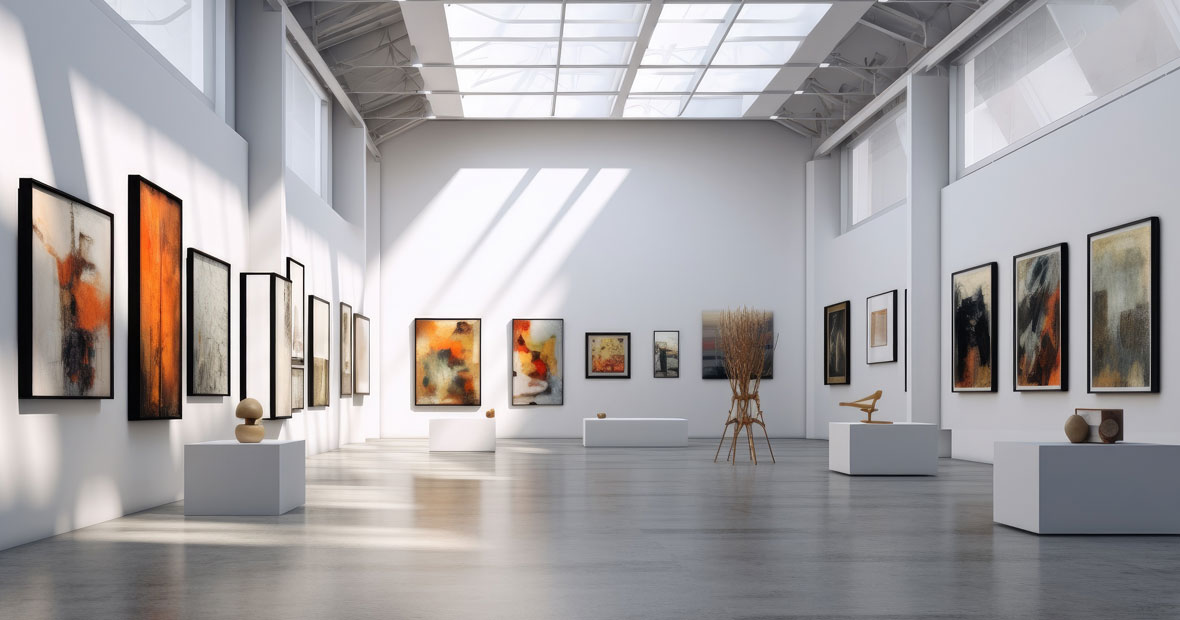
The conventional perception of an art gallery has long been that of hushed spaces where silence reigns and the art speaks only to those willing to listen closely. However, the role of galleries has been evolving. No longer just silent sanctuaries of art, they have become vibrant social hubs that facilitate community engagement and cultural exchange. This transformation taps into the intrinsic power of art as a universal language and a catalyst for community dialogue. In this article, we will explore the multifaceted social role of galleries, their function as educational and enlightening spaces, the challenges and opportunities they face in bridging communities, and their impact on society.
The Multifaceted Social Role of Galleries
Galleries are no longer simply venues to view art; they are community centers that foster cultural exchange and social inclusion.
Fostering Cultural Exchange and Understanding
Galleries often feature artworks from different cultural backgrounds, offering a platform where diverse cultural narratives can coexist. Such exposure encourages dialogue, fosters understanding, and dissolves prejudices. It becomes a place where art serves as a universal language that transcends linguistic and cultural barriers.
Providing a Platform for Marginalized Voices
Galleries have increasingly been spotlighting artists from marginalized communities, offering them an essential platform to express their voices and perspectives. This inclusionary approach enriches the cultural tapestry and allows for a broader, more nuanced dialogue within the community.
Stimulating Community Engagement and Dialogue
Through exhibitions that address social issues, galleries stimulate public discourse. They offer a neutral ground where people can engage in conversation about topics that may otherwise be divisive or difficult to discuss.
Galleries as Spaces of Education and Enlightenment
Beyond mere display spaces, galleries function as venues for education and enlightenment.
Workshops, Lectures, and Community Classes
Many galleries offer workshops, lectures, and community classes that delve into the creative process, art history, or social themes depicted in artworks. These educational ventures make art accessible and relatable, thereby drawing in a broader audience.
The Role of Curators in Community Education
Curators act as educators, carefully selecting artworks and creating narratives that provide insight into the art and its broader social context. They can guide the public in understanding the impact of art on society and vice versa.
Interactive and Immersive Exhibits
The advent of technology has enabled interactive and immersive exhibits that engage audiences in unprecedented ways. Such exhibits often invite direct interaction, making the art experience personalized and educational.
Challenges and Opportunities in Bridging Communities
While galleries offer a plethora of opportunities for community engagement, they also face several challenges.
Overcoming Economic and Accessibility Barriers
Entry fees, location, and lack of information can make galleries less accessible to disadvantaged communities. Galleries are experimenting with ways to overcome these barriers, from offering free entry days to implementing outreach programs.
Embracing Diversity in Art and Exhibitions
The lack of diversity in exhibitions can alienate potential visitors. Galleries are becoming more intentional in displaying a wide array of artworks that reflect the diversity of the community.
Utilizing Digital Platforms to Extend Reach
The use of digital platforms, like virtual tours and online exhibitions, is making art accessible to people who might otherwise never step into a gallery.
Real-world Impacts: Success Stories of Community Connectivity
There are numerous examples of galleries successfully bridging community divides.
Galleries Revitalizing Local Communities
Some galleries have been instrumental in revitalizing local communities by attracting tourism and encouraging local engagement with art.
Art Initiatives Facilitating Social Healing
Projects have been launched that use art as a healing mechanism, aiding communities in recovering from social or natural calamities.
Collaborative Projects Between Artists and the Public
Galleries have been facilitating collaborative projects where artists and the public come together to co-create artworks, thus fostering a sense of communal ownership and pride.
The Future of Art Galleries in Community Building
The role of galleries in community building is expected to continue evolving.
Embracing Evolving Art Forms and Mediums
As art forms evolve, galleries will need to adapt by embracing new mediums that resonate with younger, digitally-native audiences.
Strengthening Ties Between Artists, Galleries, and Communities
There's a need for a stronger network among artists, galleries, and communities to ensure that art continues to serve as a catalyst for social cohesion.
Envisioning a More Connected and Cohesive Society through Art
As galleries continue to diversify and democratize art, they will play an increasingly significant role in fostering a more inclusive, understanding, and interconnected society.
Art galleries have evolved from mere repositories of art to vibrant, multifaceted social hubs. They have an immense potential not only for showcasing art but also for fostering community dialogue, facilitating education, and promoting social inclusion. As we move forward, the role of galleries as catalysts for community engagement and social cohesion will only become more crucial.